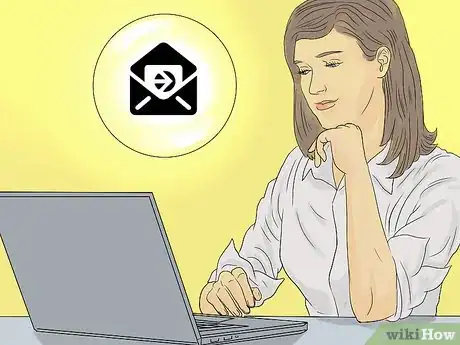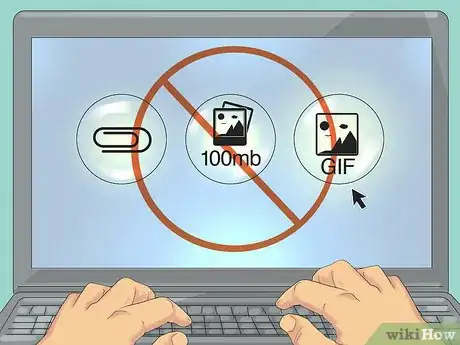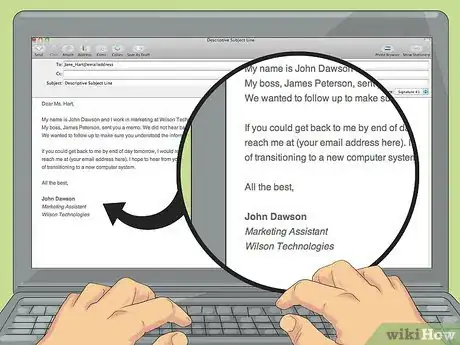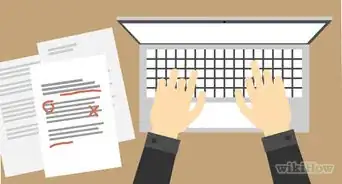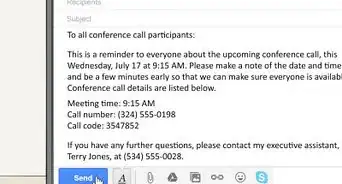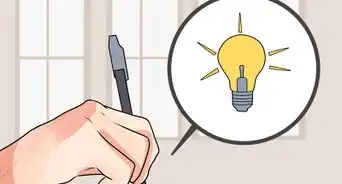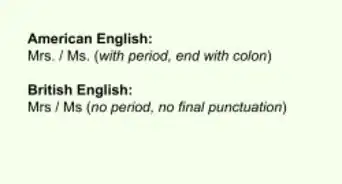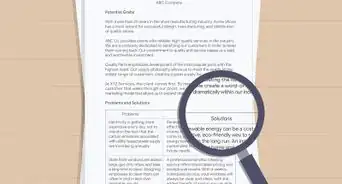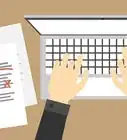This article was co-authored by Tami Claytor. Tami Claytor is an Etiquette Coach, Image Consultant, and the Owner of Always Appropriate Image and Etiquette Consulting in New York, New York. With over 20 years of experience, Tami specializes in teaching etiquette classes to individuals, students, companies, and community organizations. Tami has spent decades studying cultures through her extensive travels across five continents and has created cultural diversity workshops to promote social justice and cross-cultural awareness. She holds a BA in Economics with a concentration in International Relations from Clark University. Tami studied at the Ophelia DeVore School of Charm and the Fashion Institute of Technology, where she earned her Image Consultant Certification.
There are 8 references cited in this article, which can be found at the bottom of the page.
wikiHow marks an article as reader-approved once it receives enough positive feedback. This article received 15 testimonials and 100% of readers who voted found it helpful, earning it our reader-approved status.
This article has been viewed 1,077,312 times.
When you work in business, you may often need to compose an email to someone you don't know. While somewhat awkward, it's part of professional life. There are certain rules of etiquette you need to follow when sending a professional email to a stranger.
Steps
Beginning the Email
-
1Do your research. There is a variety of information you need to know before composing an email to a stranger. Before you begin typing, take a quick look at the website for the company where the recipient works.[1]
- If you do not know the email address of the recipient, this can be found by scanning the company website. If no email is listed, be wary about contacting the person via email. You might want to opt for a physical letter instead.
- If you were planning on asking any questions in the email, check to see if the website addresses these questions. You don't want to give the impression that you are lazy and did not take the time to read a website thoroughly.
- Make sure you're contacting the right person. Many people start off emails with something like, "I'm not sure if you're the right person to ask, but..." This is considered unprofessional and disrespectful of the recipient's time. If you don't know who to contact, hold off on the email until you can figure out that information.
-
2Write a descriptive subject line. Your subject line should convey your exact reasons for sending the email. Oftentimes, emails from strangers are ignored or overlooked. A solid subject line reduces the chance your email will be passed over.
- Use a few words to say what the email is regarding. Use as many details as possible to include in 4 or 5 words. For example, "Meeting at 10 a.m. about new computers" is better than "Meeting this Morning."[2]
- Vague subject lines, such as "Hello" and "Hi", are sometimes inadvertently read as spam and redirected to the recipient's spam folder.
- Use a professional email, as your email will show up alongside the subject line. Use an email that uses your full name rather than one that that uses a persona or a vague phrase.
- Never use all caps in an email subject line, even if the email is urgent. This comes off as shouting, which can be interpreted as hostility.
Advertisement -
3Address the recipient. Include a salutation and professional greeting. This can be tricky if you're emailing a stranger, as you may not know their preferred name. There are a few etiquette guidelines, however, that can help you avoid missteps.
- If you don't know the person's name, avoid overly formal phrases like, "To Whom it May Concern" or "Dear Mister/Miss." Don't go too casual either. "Hi" is far too unprofessional for a business email. You might be better off beginning the email with a simple, "Hello."[3]
- If you know the person's name, make sure to spell it correctly. Check the spelling a few times, as it's easy to slip up if you've never emailed the person before.
- Use "Mr." and "Ms." followed by the person's last name only. For example, if you're emailing Jane Hart begin your email with "Dear Ms. Hart" rather than "Dear Ms. Jane Hart."
- Never make assumptions about a woman's marital status. If you know her marital status, it's still best to avoid drawing attention to it in an email as it's irrelevant to the business world. Stick to "Ms" and never use "Miss" or "Mrs." unless the recipient uses these salutations herself.
- If someone has a PhD, it's appropriate to use "Dr" when addressing them.
-
4Identify yourself and the company you represent. Remember, when you're sending a business email you're representing your place of employment. Introduce yourself and explain how you got the person's contact information. Identify your company as well. For example, an email could begin, "Dear Ms. Hart, My name is John Dawson and I work in marketing at Wilson Technologies."
Writing the Email
-
1Keep it short and to the point. By getting to the point and clearly identifying your purpose, you present a professional image that will be taken seriously by the reader. This also increases the likelihood your email will be read and responded to promptly, as people put off dealing with overly wordy responses.
- After identifying yourself and your company, your next sentence should explain the email's purpose. It's best to state your case within two sentences.[4]
- Be positive. Even if you're writing to address a complaint or concern, be courteous and respectful throughout the email. Do not bad mouth bosses, other companies, or employees as this reflects poorly on you.
- While in cover letters, it's standard to include some basic background information about yourself if you're emailing on behalf of a company leave that information out. Simply state your name and your position in the company before moving on to the email's purpose.
-
2Use simple, direct prose. A business email should be as easy to read as possible. This means using clear language that is easy to understand.
- Choose the active voice over the passive voice. For example, do not say, "A memo was sent to you by my boss, James Peterson." Instead say, "My boss, James Peterson, sent you a memo."[5]
- Avoid jargon and technical terms, even if such terms are used heavily in your company. Opt for simple English and common phrases.[6]
- Use short sentences. Eliminate conjunctions when possible and break up long sentences. For example, "We did not hear back from you in regards to the memo and wanted to follow up to make sure you understood the information." This would be better stated as, "We did not hear back from you in regards to the memo. We wanted to follow to make sure you understood the information."[7]
- Use proper grammar, spelling, and punctuation. Spell check and proofread all emails before hitting the send button.
-
3Know what to avoid sending. There are certain rules of etiquette in regards to what should be transmitted via email. Understand what to avoid sending before contacting someone.
- Attachments are okay if you're emailing regarding information that was specifically requested, but do not send attachments to strangers without prompting.[8]
- Avoid overly large attachments and files. In the event sending such information is necessary, send an email beforehand giving the recipient a head's up.[9]
- Do not use an overly long signature. Ideally, your signature should only include your name, mailing address, email address, and phone number. If you want, it's also appropriate to include your job title.[10]
- Do not include graphics or backgrounds. They tend to clog up email memory and come off as unprofessional in a business setting.[11]
Finishing the Email
-
1Give the recipient instructions on how to respond. Towards the end of the email, provide instructions on how the recipient can follow up.[12]
- Politely specify a timeframe in which you would like to hear back. For example, "If you could get back to me by end of day tomorrow, I would really appreciate it."
- Include any contact information as needed. You can simply say, "This is the best email to reach me at" or request a phone call and include your number.
- Be specific about what you want from the recipient. Do not simply say, "I hope to hear from you soon." Instead, say, "I hope to hear from you soon so we can discuss the logistics of transitioning to a new computer system."
-
2Use an appropriate send-off. Before your name, there will be some form of a goodbye. Pick a business-appropriate closing for your email.
- Do not simply use a hyphen and then include your name. This comes off as too informal, as do sign offs like "See you around" and "Take it easy." Emoticons, like smiley faces, are best avoided.[13]
- In a business email, something like "Best" or "All the best" is appropriate as it's friendly without sacrificing professionalism. "Sincerely" is another good option, but may come off as stuffy.[14]
- "Thanks" and "Thank you" are also appropriate, but should be avoided if you're not asking the recipient to perform a specific task or duty.[15]
-
3Follow up. The business world is busy. If you do not hear back from the recipient in an appropriate time frame it's appropriate to send a follow up e-mail.
- If someone does not respond, it was likely not deliberate. Emails get backed up and oftentimes, even if you follow proper protocol, things accidentally end up in a spam filter.[16]
- A follow up email should be a direct reply to an email you've already sent. Be polite, starting off with something like, "I know you're probably very busy, but I just wanted to make sure you got my email." Then briefly restate the subject of the original message.[17]
Email Writing Help
Our Most Loved Articles & Quizzes
Community Q&A
-
QuestionWhat is the "cc" for when sending an email?
 Community AnswerIn e-mail terminology, "cc" stands for "carbon copy" and "bcc" stands for "blind carbon copy." The difference between them is that carbon copy (cc) recipients are visible to all other recipients, whereas those who are bcced are not visible to anyone.
Community AnswerIn e-mail terminology, "cc" stands for "carbon copy" and "bcc" stands for "blind carbon copy." The difference between them is that carbon copy (cc) recipients are visible to all other recipients, whereas those who are bcced are not visible to anyone. -
QuestionHow do I email someone asking them to please save me a password?
 Community AnswerDo not share passwords, personal or official, with anyone.
Community AnswerDo not share passwords, personal or official, with anyone. -
QuestionWhat if I do not know the name of the person I am emailing?
 Community AnswerIf you don't know the name of the person, you should being the email with "To Whom it May Concern."
Community AnswerIf you don't know the name of the person, you should being the email with "To Whom it May Concern."
References
- ↑ https://woodpecker.co/blog/research-sales-email/
- ↑ http://www.english-at-home.com/business/how-to-write-an-email/
- ↑ http://www.sitepoint.com/web-foundations/start-email-stranger/
- ↑ http://www.entrepreneur.com/article/240454
- ↑ http://www.english-at-home.com/business/how-to-write-an-email/
- ↑ http://www.english-at-home.com/business/how-to-write-an-email/
- ↑ http://www.english-at-home.com/business/how-to-write-an-email/
- ↑ https://owl.english.purdue.edu/owl/resource/636/01/
- ↑ https://owl.english.purdue.edu/owl/resource/636/01/
- ↑ https://owl.english.purdue.edu/owl/resource/636/01/
- ↑ https://owl.english.purdue.edu/owl/resource/636/01/
- ↑ https://www.indeed.com/career-advice/career-development/how-to-end-an-email
- ↑ http://www.forbes.com/sites/susanadams/2013/09/27/57-ways-to-sign-off-on-an-email/
- ↑ http://www.forbes.com/sites/susanadams/2013/09/27/57-ways-to-sign-off-on-an-email/
- ↑ http://www.forbes.com/sites/susanadams/2013/09/27/57-ways-to-sign-off-on-an-email/
- ↑ http://www.entrepreneur.com/article/240454
- ↑ http://www.inc.com/jason-surfrapp/the-secret-art-of-the-follow-up-email.html
About This Article
To compose a business email to someone you don't know, address them using "Mr." or "Ms." followed by their last name. For example, you could write "Dear Mr. Smith." If you don't know the person's name, begin your email with a simple "Hello." Avoid using "To whom it may concern" since that can be too formal and impersonal, but also avoid being too casual by starting your email with something like "Hi." To learn how to write the contents of your email, scroll down!




